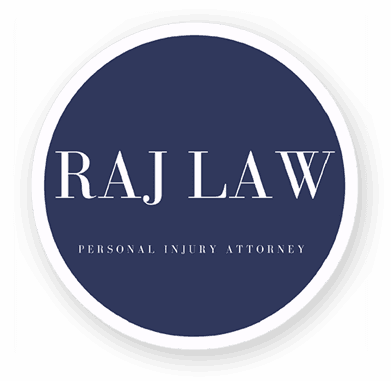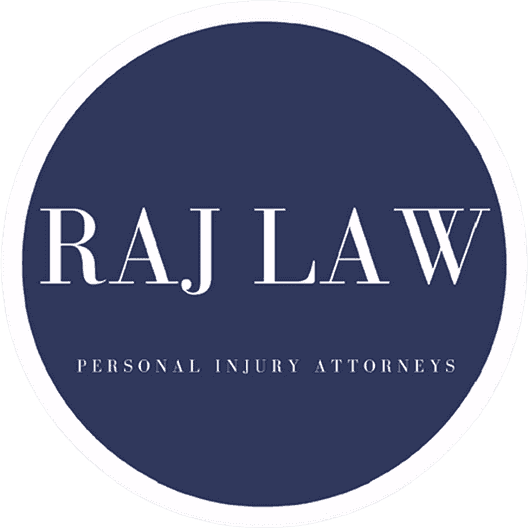


Phoenix Personal Injury Lawyer
Injuries can be difficult things to go through, from the physical pain and recovery, to dealing with the fallout from mental trauma, to working out practical issues regarding one’s ability to work and earn a living.
When that injury is caused by the fault of someone else, our Phoenix personal injury lawyer can work to secure a financial settlement that will fairly compensate the injured plaintiff for their losses. But proving fault in a personal injury case and establishing what constitutes a fair settlement requires good, methodical legal work. Namely, it must be proven that the defendant in the case was negligent.
RAJ Law serves the diverse community, including both English and Spanish-speaking clients, on a wide range of personal injury cases. Call our Phoenix office today at (602) 579-5555 or contact us online to set up a consultation.

There are four elements that are required by law to establish negligence. They are duty of care, breach, causation, and damages. Then, the financial settlement offered is subject to Arizona law on pure comparative negligence. Here’s how it works, step-by-step…
Duty of Care
For a defendant to be held liable for the injuries suffered by the plaintiff, the defendant must have owed them some level of responsibility. The legal definition for that responsibility is the duty of care. In many cases, the existence of duty care will be evident. In others, it may not be.
As an example, let’s say there is a medical malpractice case where a patient was told that a cyst was benign, but in fact it proved to be cancerous. If this diagnosis was given in the auspices of a medical office, with co-pays and documentation, then the doctor clearly owed a duty of care to the patient. But let’s say the same conversation happens when the patient is chatting with a doctor friend of theirs at the neighborhood Super Bowl party. It’s unlikely a duty of care exists in this situation.
In a car accident case, the duty of care will likely be present. Everyone driving at a busy intersection like 67th & McDowell ,or anywhere else, owes a duty of care to drive appropriately for the circumstances. But in a premises liability case, the duty of care owed will be dependent on the conditions that put the injured plaintiff on the property.
Breach
It’s not enough for the defendant to have simply owed a duty of care. It’s also necessary that the defendant breach that responsibility. Arizona law does acknowledge the unfortunate reality that accidents happen, and sometimes they are really just accidents with no one at fault. In these cases, no one is liable. But when a defendant fails to exercise a reasonable standard of care, then they are guilty of breach.
What is reasonable is, to a certain extent, in the eye of the beholder. In personal injury cases, the beholder is a Maricopa County court—or how a defendant’s insurance company anticipates a court will react if a case goes to litigation.
A driver that is going too fast for conditions is not acting reasonably. A doctor that performs the wrong surgery on the wrong patient has not acted reasonably. On the other hand, the driver that was going at a moderate speed and still skidded on a wet road, might have a case for driving with reasonable care. The surgeon who performs an extremely difficult operation and has the scalpel miss its mark by a half-millimeter, could argue they performed reasonably.
In some cases—notably medical malpractice—reasonableness is often subject to the testimony of outside expert witnesses. In others, like car accidents, a typical Arizona jury will have people who instinctively understand what reasonable actions are.
Causation
After our Phoenix personal injury attorney has proven duty and breach, the third step is to show that it was the defendant’s breach—the accident itself—that caused the plaintiff’s injuries.
This is another step where some cases will be straightforward. A plaintiff that suffered a spinal cord injury in a multi-car accident will likely be able to show causation without too much difficult. But let’s say that same accident resulted in a basic jarring of the car from behind, which left the driver with recurring back problems. What happens if an insurance company’s attorneys find out that the driver already had back issues?
The driver might know that the accident left them in considerably worse shape, no longer able to manage the aches and pains that came with their bad back. But the lawyer has to prove that. This is one of many reasons why we, as attorneys, always advise to immediately seek medical attention after an accident, even if one doesn’t feel like they need it. The sooner a doctor looks at an injured plaintiff, the more reliably their injuries can be traced to the accident.
Insurance companies will have access to a plaintiff’s previous medical records and should be expected to do all they can to sever—or at least weaken—the perceived link between accident and injury. A plaintiff’s Phoenix personal injury lawyer must be no less determined to make sure that link stays intact.
Damages
The final step is proving that the plaintiff was, in fact, damaged by the injury the defendant caused, and what the scope of those damages are.
A person might wonder what the circumstances could be, given that the first three conditions of negligence have been established, where there would not be damages. Here’s an example—a person is shopping at a grocery store. There is a spill in one of the aisles, that’s neglected for several hours. The person slips and falls.
The first three elements of negligence will likely be seen as present. But if the person only has a little soreness in their hip that has no impact on their daily life, then it’s unlikely a court will see them as having been damaged, at least to an extent that requires compensation. But if that same fall results in a wrenched back or a broken hip? Now, there are damages.
A more difficult question, and one where it’s important to have a good Phoenix personal injury attorney in our corner, is understanding all that should be considered when adding up the final damage tally. Medical costs, for both short-term care and long-term rehab must be a part of it. The cost of any therapy needed for post-traumatic stress or other mental anguish must be included. Lost income from missed time at work will have to be a factor. Then there is the more intangible factors of pain and suffering, that are difficult to quantify, but must have a dollar amount attached to them, nonetheless.
Cases involving catastrophic injuries, from a damaged spinal cord to an amputated limb, to a traumatic brain injury, are particularly complex when it comes to damages. That damages exist is not going to be in question. But compensating a person for the full scope of their losses requires a lawyer who understands that the damages aren’t just the short-term costs, but the long-term damage to a person’s future.
Pure Comparative Negligence
In addition to settling on a dollar figure for a settlement, Arizona courts also have the option to assign responsibility for the accident on a percentage basis. This is, they may conclude that while the defendant was negligent, the plaintiff was still 20 percent responsible for the accident. Or a court may look at a plaintiff’s pre-existing medical conditions and conclude that those conditions were responsible for 30 percent of the damage suffered.
The plaintiff can collect in proportion to the defendant’s share of responsibility. That is, if a defendant is handed 75 percent of the liability, that’s the portion of the settlement a plaintiff gets. A real-world example would be a settlement coming back at $1 million, but the plaintiff only collecting $750,000 based on this doctrine of comparative negligence.
It is worth noting, however, that Arizona’s law is also plaintiff-friendly, because it allows for collection even if the plaintiff is found to bear primary responsibility for the accident. Let’s say a plaintiff (or their pre-existing conditions) are found to 60 percent of the reason for the accident. They can still collect 40 percent of the damage award. Most states that use comparative negligence require that a plaintiff’s share of the blame be under 50 percent to get anything at all. Arizona, on the other hand, allows for collection even if a plaintiff is 99 percent responsible.
What the doctrine of comparative negligence really underscores, however, is just how important it is to have an attorney who fights for their client on every last facet of a case. Even a seemingly “slam dunk” case can be watered down by the defendant’s lawyers. Even small details can add up to large sums of money. That hypothetical $1 million settlement we cited above? Every percentage point of responsibility is worth $10,000. That’s worth fighting for.
Getting a fair personal injury settlement calls for legal counsel that understands all it takes to investigate, negotiate, and litigate a case. Reach out to RAJ Law at (602) 579-5555 or fill out our online contact form today.
Client Testimonials
-
"They were very patient with my lack of knowledge and took the time to explain everything to me."Tom F.


A Phoenix Personal Injury Lawyer Who Fights for You
At RAJ Law, we know what it’s like, from personal experience, to have been injured through the negligence of someone else. We know how much injured people rely on their attorney to fight for their interests—to not back down in negotiations and to do the work necessary to secure a fair settlement. We’ll always fight for you.
Call our office today at (602) 579-5555 or contact us online to set up a consultation.
Contact Our Offices
Work with an attorney who will fight for the fair settlement you deserve. Contact RAJ Law today. Complete our form below or call us at (602) 579-5555.

